Central India boasts of almost 450 species of birds, spread over it’s stunning landscape. Here is an introduction of a few multi-faceted winged wonders or star birds of the Central Indian forests.
These pristine forests are also home to several star species, a few threatened and lesser known varieties of birds.
In this chronicle, we hand-pick and bring to you ten different star birds, amongst many.
Star Bird 1 : Malabar Pied Hornbill (Anthracoceros coronatus)
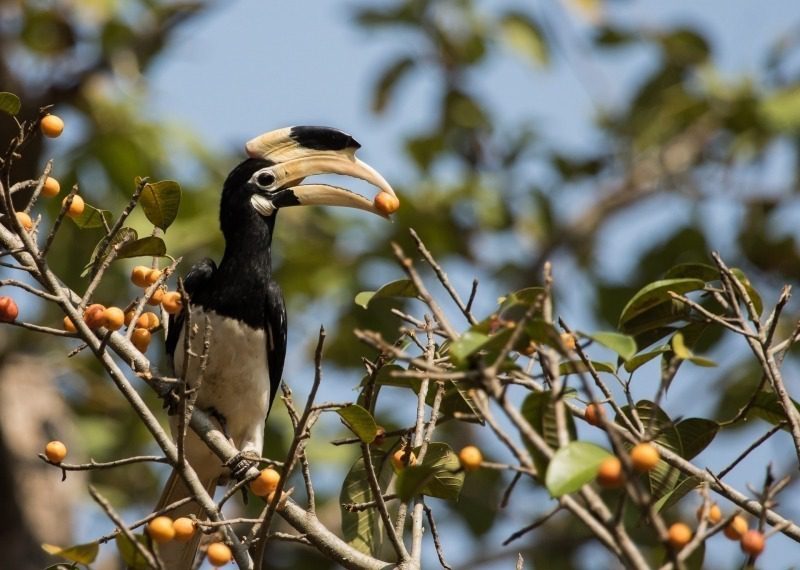
This regal bird stands out amongst the rest with it’s prominent yellow bill that has a black casque. A casque is a large black growth on the upper mandible of the bill.
The male hornbills are the family nurturers. The female lays two or three eggs in a tree hole, which is blocked off by the male with a cement made of mud, droppings and fruit pulp. There is only one narrow aperture, just big enough for the male to transfer food to the mother and the chicks. When the chicks and the female are too big to fit in the nest, the mother breaks out and rebuilds the wall, then both parents feed the chicks.
Did You know?
- These unique birds are near threatened.
- Their sharp calls are vital in locating them in the woodlands, where they can be found perched on fruiting trees like Banyan, Peepul and Ficus.
Star Bird 2 : Brown Fish Owl
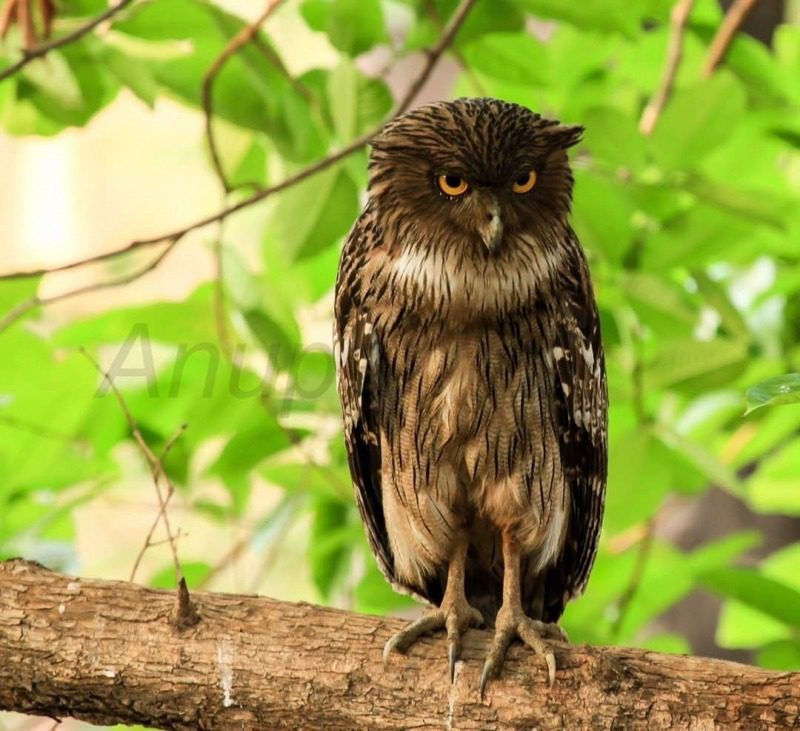
Widespread throughout Central India these large, astute owls inhabit woodlands and rocky areas near water bodies. Brown Fish Owls can be identified by the black streaked, brown plumage with indistinct horizontal ear tufts and a pale throat patch.
They spend their day roosting among the shade of large trees, and as night befalls they fly to open patches in search of their hunt. Their roosts can be identified by droppings of fish and crustaceans.
Did You Know?
- Owls have specialised feathers with fringes of varying softness that help muffle sound when they fly. Their broad wings and light bodies make them silent fliers helping them stalk their prey easily.
- Owls are revered in many cultures, and considered a symbol of wisdom and learning in the Hindu mythology
Star Bird 3: Coppersmith Barbet (Psilopogon haemacephalus)
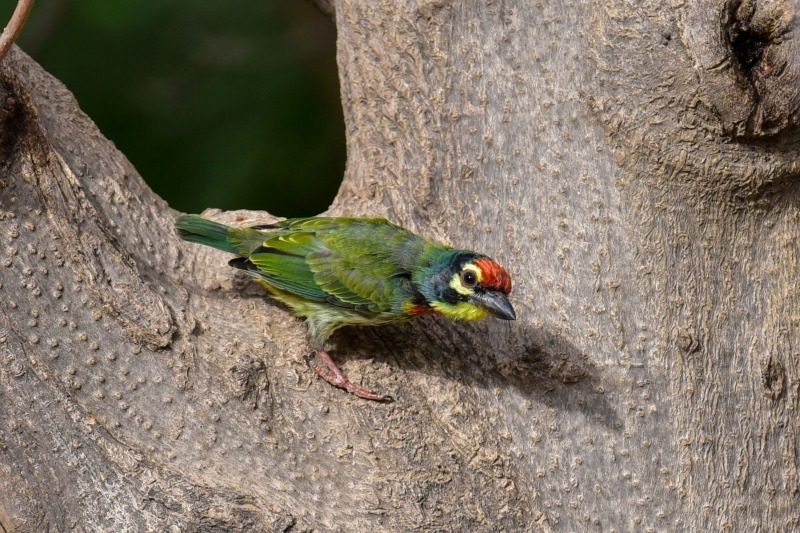
These bright, beautiful birds can be found in the woodland, fringe forests of Central India and also urban groves. These birds with their prominent red and yellow head and throat, a stout bill and green body are quite a visual treat.
Did You Know?
- Coppersmith Barbets perch in the open, usually on tree tops and vocalise with a sharp metallic call for long periods.
- Usually occurring singly or in small groups, they congregate only in places like plentiful fruiting fig trees
Star Bird 4: Scarlet Minivet (Pericrocotus flammeus)
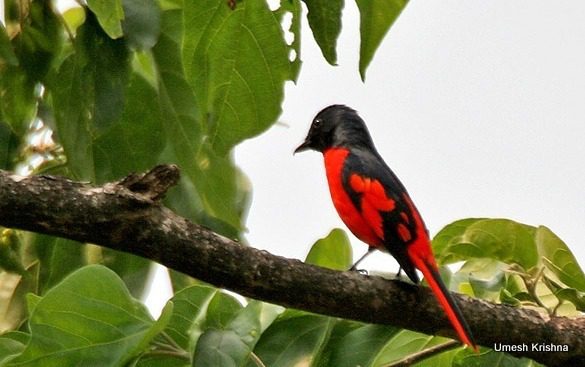
The male is distinguished from the female as they are bright red, while the females are bright yellow. Scarlet Minivets are seen in woodlands with tall trees and are known to catch insects.
Did You Know?
- They can be found moving around in small flocks or pairs and have a pleasant whistling call.
- Scarlet Minivets nest high up on treetops.
Star Bird 5: Indian Roller (Coracias benghalensis)
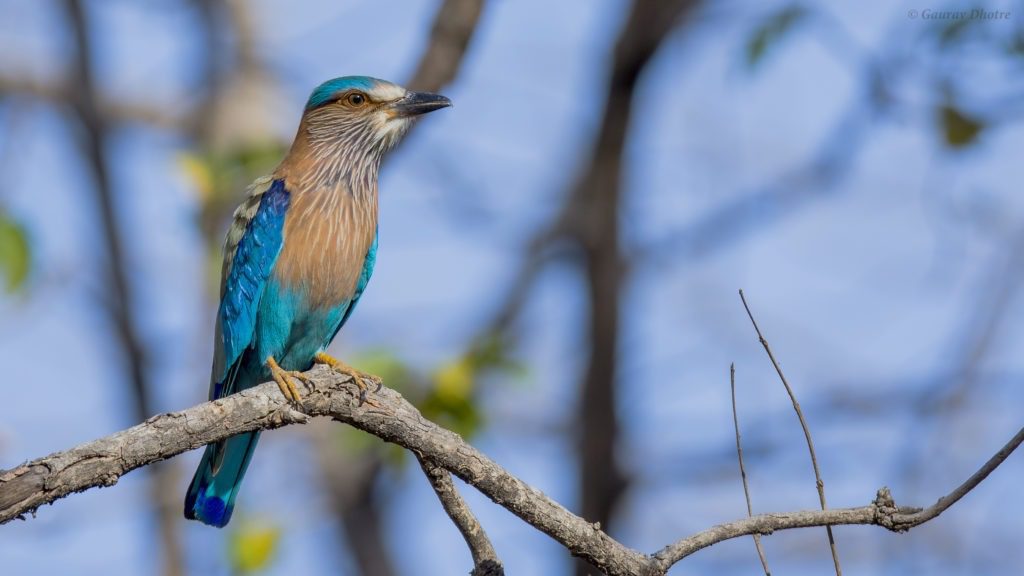
This captivatingly stunning bird is easily found in various habitats of Central India.
The colours of this beautiful bird are best appreciated when on flight. As part of their courtship display in the post winter and summer months, the males display a variety of acrobatic manoeuvres.
Diet includes, insects, some small reptiles and crustaceans.
Did You Know?
- States like Orissa, Karnataka and Andhra Pradesh have chosen the Indian Roller as a state symbol.
- They are also considered a scared bird in Hindu mythology, associated with Lord Shiva.
Star Bird 6: Indian Paradise Fly Catcher (Terpsiphone paradise)
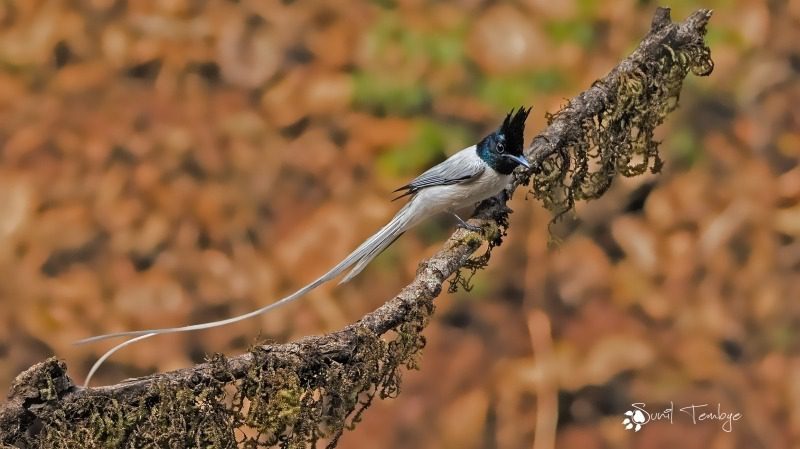
The gorgeous black and white bird is the state bird of Madhya Pradesh.
Seeing an Indian Paradise Fly Catcher fly around low bushes with its long tail streamers trailing behind, is a bird watchers delight.
The male are known for their black crested head, white body and white trail streamers which are more than twice the body length. Females are short tailed with rufous (reddish-brown) wings and paler grey throat.
The breeding season lasts from May to July. They are socially monogamous taking part in nest-building, brooding, incubation and feeding the young ones.
Did You Know?
Indian Paradise Flycatchers build their nests next to a breeding pair of Drongos to keep the predators away.
Star Bird 7: Golden Oriole (Oriolus kundoo)
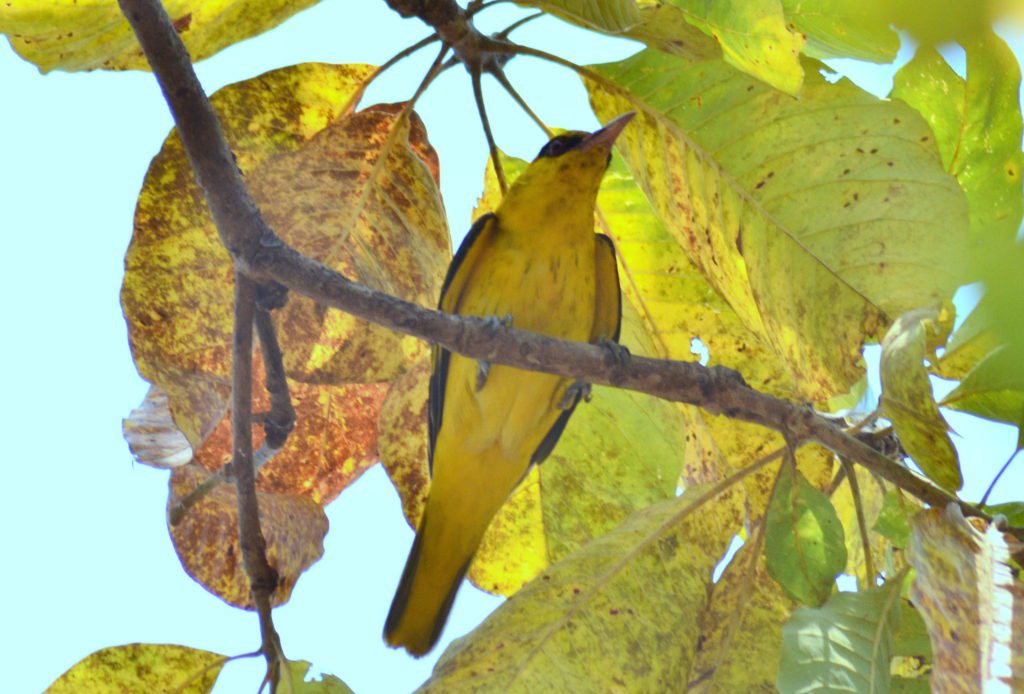
Golden Oriole is a bright yellow bird with contrasting black wings and a narrow black patch around its red eyes.
Females are a dull shade of almost olive, with streaks under the belly.
They can be found in pairs or singly in woodlands, fringe forests or fruit groves.
Did You Know?
Golden Orioles play an important role in the dispersal of seeds in the wild.
Star Bird 8: Racket Tailed Drongo (Dicrurus paradiseus)
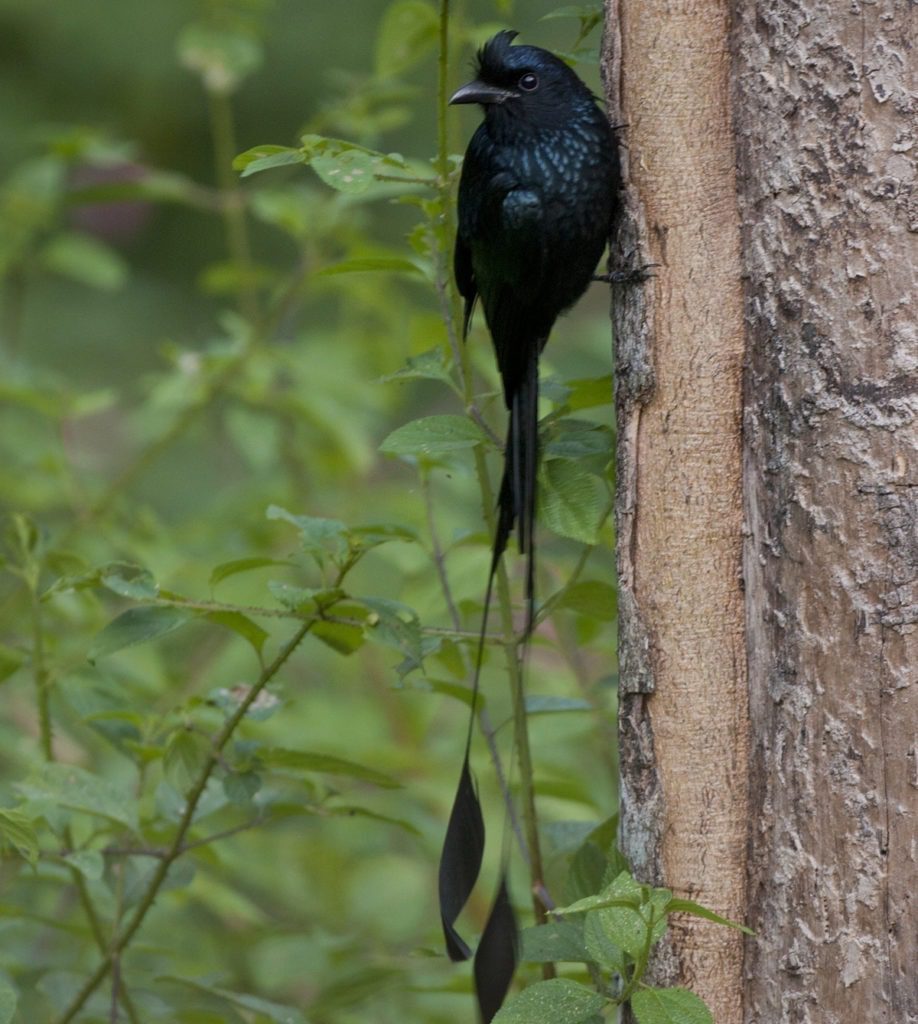
The Racket tailed Drongo gets its name from the long tail streamers that end in flat spatulate tips. They also have a loose crest of feathers on their head.
They are encountered in woodlands moving in mixed flocks with woodpeckers and babblers. They are known to steal the insects or preys caught by these birds. They also mob larger birds while nesting.
Did You Know?
These black beauties are expert mimics and can mimic other birds and even forest sounds. They are known to mimc raptor calls to alarm other birds, and steal their prey from them.
Star Bird 9: Rudy Shelduck (Tadorna ferruginea)
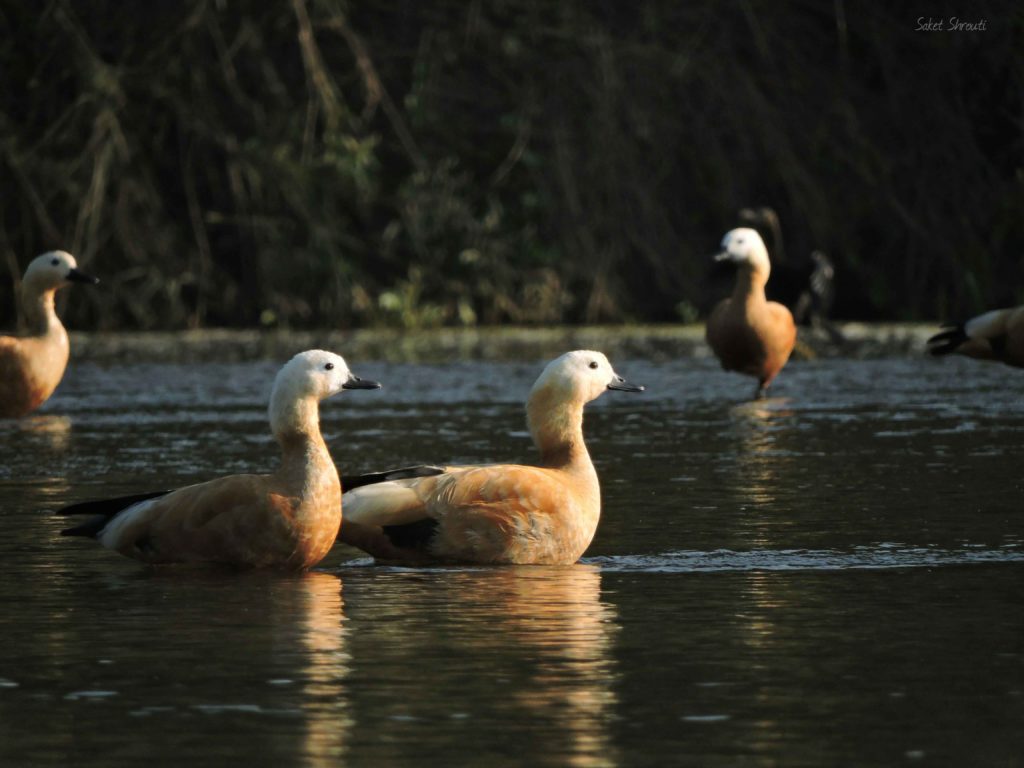
These vibrant, orange ducks migrate to Central India in the winters, from their Himalayan breeding grounds. They are the first of the migrants to arrive and the last to leave.
They conspicuously stand out in the wetlands because of their bright colours. The breeding male has a black collar, the only differentiating factor between the sexes.
They are found in pairs and not as gregarious as the common shelduck.
Did You Know?
They are known as Bharminy ducks in India and are considered sacred by Buddhists.
Star Bird 10: Green Bee Eater (Merops orientalis)
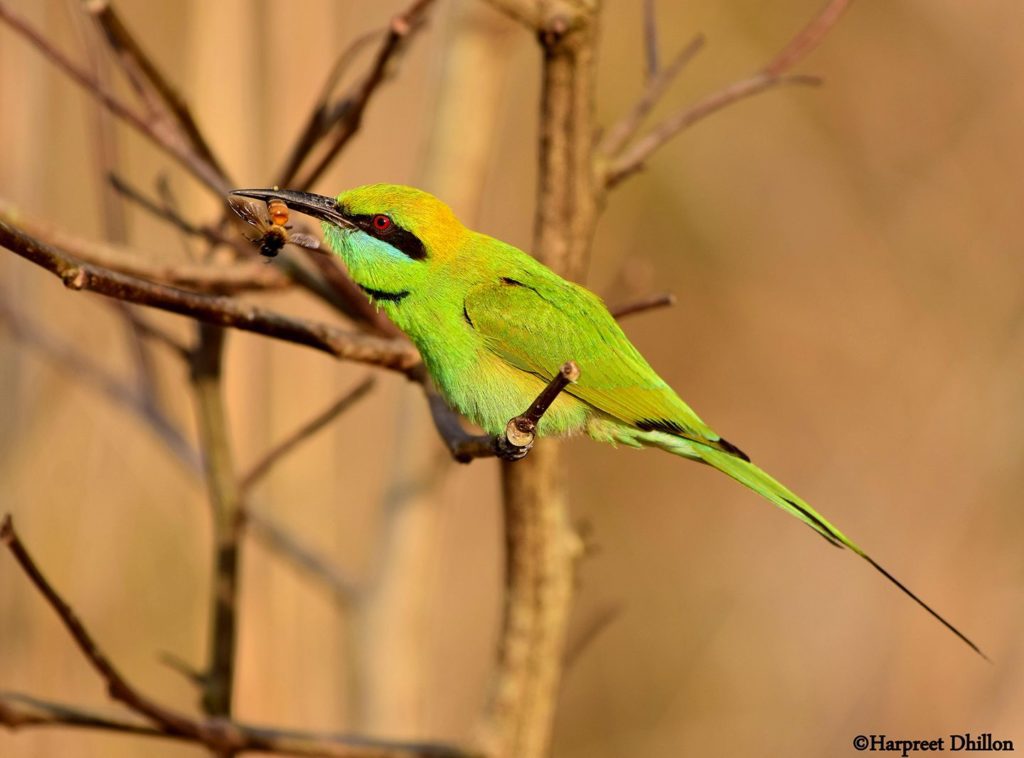
Green Bee Eaters are widely found in Central India’s forests and cultivations. They can be seen perched over open patches like forest paths, grasslands and fields.
Flock sizes vary from a few individuals to many, especially in summers and post monsoons when prey is abundant. They nest on flat ground or slightly sloped sandy banks where they dig nesting tunnels.
Did You Know?
- Unlike any other species of bird, they are able to predict human and predator behaviour. When it detects unwanted visitors near the nesting hole, it avoids entering the nest to prevent giving away the nesting location.
- Green Bee Eaters bathe in sand to remove parasites and remove excess oil in plumage.
These are just a few of the star birds that nest in the forests of Central Highlands. These avifauna and those not mentioned here have captivated every bird watcher with their unique traits and characteristics. And will continue to do so for times to come.
